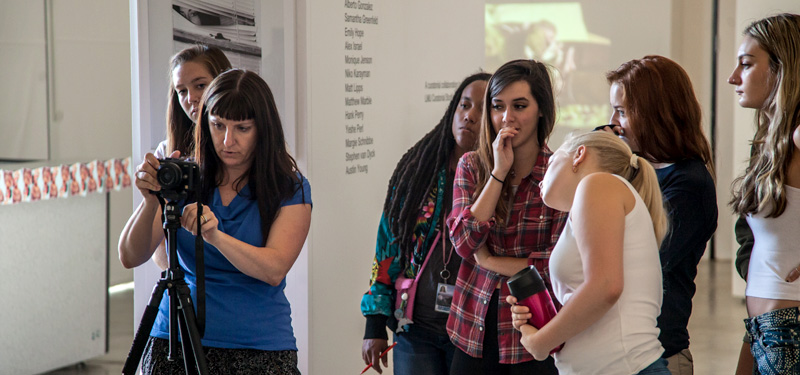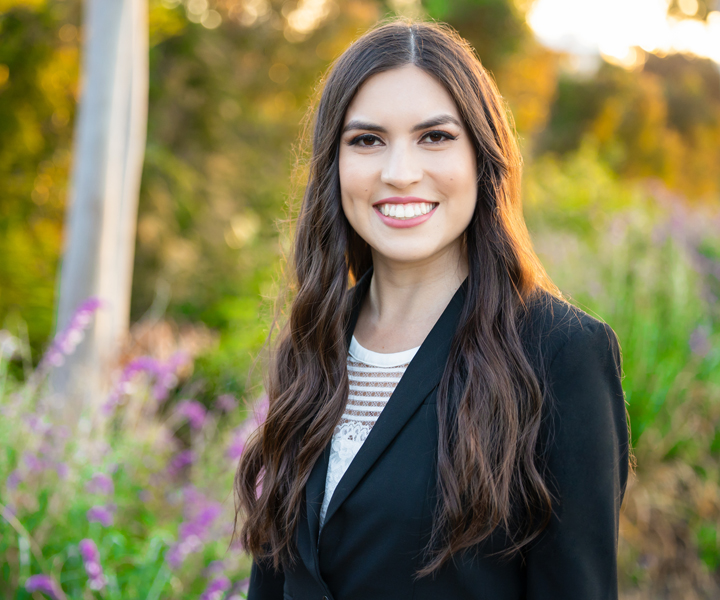
LMU’s Art History program uses an interdisciplinary approach to teach students how to analyze the visual arts and develop the critical thinking skills needed to understand the visual culture and art of past and present societies. Students have a diverse offering of courses that reflect both global and historic developments of visual and material culture. The study of art history develops a great many skills, including specific knowledge of the artistic expression of civilization, analysis of art works, their meaning and purpose, clarity in writing and oral communication.
-
Art History training can develop the following skills:
- Determining origins of art works and human artifacts
- Describing and critiquing art
- Recognizing the school/period/artist of a work of art
- Analyzing the artistic qualities of everyday objects
- Defining quality
- Writing and speaking effectively
- Developing sensitivity to cultural viewpoints
- Working with primary sources
- Presenting and defending theories/ideas
- Understanding how the making of art has changed across time
- Gathering, analyzing, and organizing information
- Weighing values
- Conveying complex information
- Thinking critically
- Interpreting a culture’s values and beliefs through its art
- Examining evidence
- Explaining the present by referring to the past
- Developing visual memory
- Evaluating research results
- Comparing and analyzing art works
- Clarifying others’ thoughts and ideas
- Participating in groups
- Speaking to groups
- Object Handling
- Curating Skills
-
The skills and abilities developed through a major in Art History serve as the building blocks for a wide range of occupations and career paths.
- Curator (public institutions or private collector)
- Archivist
- Publisher
- Grants Specialist
- Collections Manager/Consultant
- Antiques Dealer
- Museum Director/Education Coordinator
- Conservator/Restorer
- Public Relations Specialist
- Gallery Director
- Research Assistant
- Arts Handler
- Cultural Events Planner
- Exhibition Specialist
- Book/Journal Editor
- Arts Council Director
- Professor
- Appraiser
- Arts Consultant
- Arts Programmer
- Attorney
- Preservation Officer
- Librarian
- Arts Writer/Reporter/Critic Preservation Agency Curator Officer
- Historical Preservation
- Coordinator
- Registrar of Historic Places
- Museum Registrar
- Museum Educator
- Entrepreneur
- Art Therapist
- Development Officer
- Teacher
-
- Museums
- City, state, and federal government agencies
- Interior design firms
- Colleges/universities
- Restoration studios
- Publishing houses
- Archives
- Private collectors
- Auction houses
- Federal/state parks
- Fundraising firms
- Insurance companies
- Research organizations
- Corporations
- Community organizations
- Educational/cultural institutions
- Historical societies
- Magazines and newspapers
- Antique dealers
- Auction houses
- Art galleries
-
Art History
Graduate degrees include the M.A. and the Ph.D. Specific areas of study cover all chronological periods from prehistory to contemporary art, and all geographic areas including Africa, Asia and Latin America. Art history is increasingly interdisciplinary, considering art in the larger political and social context of culture.
Archaeology
Archaeology is concerned with the recovery and interpretation of the material record of our past. Most of the record is not readily available and has to be extricated from fragmentary deposits. Field training is key; many graduate programs offer courses and opportunities in excavation.
Art Education
Art education programs are designed for students interested in advanced professional training as artist-teachers in public and private schools, for researchers in the arts, and for art professionals committed to developing the visual arts in schools, museums, community-based educational programs, and other alternative educational sites.
Conservation
Conservators work with paintings, sculpture, and works on paper, etc., to maintain them in the best possible condition. Professionals will have had extensive training in chemistry as well as in studio art and art history.
Historic Preservation
Historic Preservation describes the activities that promote the protection and continued use of a previously constructed environment.
Architecture
Graduate programs are intended for the student who wishes to pursue a career as a practicing architect. A student must cover the fundamentals of the field with courses in design, architectural history, theory, and building technology.
Art Therapy
Graduate programs in art therapy prepare students to use art as a therapeutic tool in working with all clients — children, adolescents, adults. Admission to these graduate programs usually requires the equivalent of a double major in art and psychology. Art History is an excellent background for such professional programs as Law, Arts Management, and Business.
-
ARHS 4710
Museum/Gallery Internship
Students intern at an established museum or gallery learning from practice, guidance and observation.
Alumni Reflections

Bo Hamby '16
Producer, NPR Morning Edition
